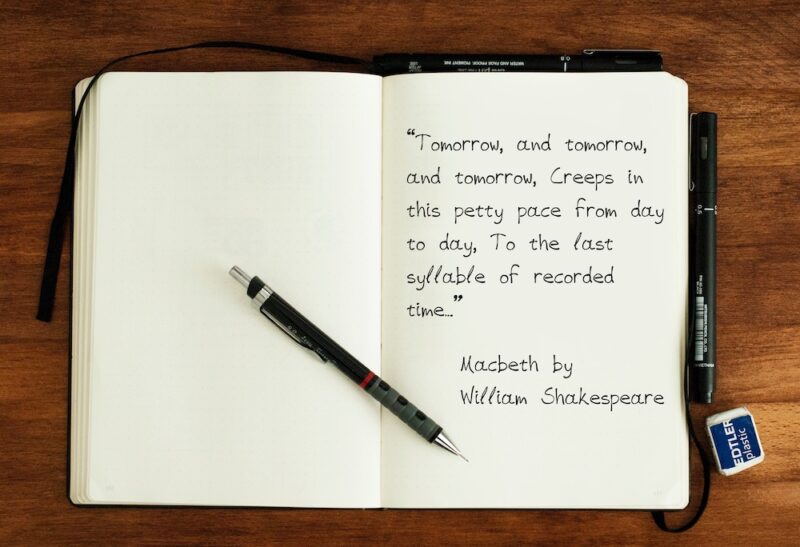[su_label type=”info”]Bookmark[/su_label]
[su_box title=”Definition” style=”default” box_color=”#82e0aa ” title_color=”#FFFFFF” radius=”3″]According to Britannica:
A novel is an invented prose narrative of significant length and complexity that deals imaginatively with human experience.
According to Merriam-Webster:
A short story is an invented prose narrative shorter than a novel usually dealing with a few characters and aiming at unity of effect and often concentrating on the creation of mood rather than plot.
[/su_box]
When analyzing the novel vs short story, the choice will depend on the depth of the idea and the level of exploration you wish to pursue. For those looking for a quick read with a tightly woven narrative, a short story might be the ideal form. Conversely, if you want detailed story arcs and the freedom to evolve, a novel could be the better choice.
When deciding whether to read a novel or a short story, understanding the fundamental differences between these two forms of fiction is essential. Typically, readers can read a short story in a single sitting, focusing on a single plot or major event. In contrast, a novel expands on its narrative through multiple plot lines, character development, and thematic exploration, requiring a longer time commitment from its readers.
Defining The Forms

Both novels and short stories are essential forms of fiction that appeal to different tastes and serve varied literary purposes. Understanding their definitions helps readers appreciate the unique qualities that each form presents.
A novel is an extended work of fiction, typically starting at around 50,000 words and sometimes exceeding 300,000 words. This length allows for detailed exploration of complex plotlines, multiple subplots, and extensive character development.
Novels often introduce various characters and settings, offering a fully fleshed-out world. This depth enables readers to form a stronger connection with characters and become immersed in the narrative.
Genres within novels can range from fantasy and science fiction to romance and mystery, each with its own conventions and audience expectations. The design of a novel allows the author to address numerous themes across a broader canvas.
A short story, on the other hand, is a brief work of fiction, typically ranging from 1,000 to 7,500 words. Its brevity necessitates a condensed narrative, focusing on a single incident or a few key characters.
The compact nature of short stories means they often explore a single theme or moment in time, providing a concentrated emotional impact. Flash fiction takes this further, delivering stories in fewer than 1,000 words for an even more succinct experience.
Short stories are self-contained and usually not part of a series. This form encourages readers to appreciate the art of concise storytelling and the skill required to create a compelling narrative within a limited space.
Structural Elements
Understanding the structural elements of novels and short stories highlights their unique qualities. Each form engages readers differently through plot complexity, character development, setting, and pacing.
Plot Complexity
Plot complexity in novels allows for elaborate story arcs and multiple subplots. A novel’s longer length supports rich, intricate narratives that can weave together various storylines, providing depth and a sense of immersion.
In contrast, short stories focus on a single plotline. The brevity of the format requires a sharp, concise structure that emphasizes a singular, impactful event or twist. This streamlined approach concentrates on delivering a potent narrative punch in a limited space.
Character Development
Character development is extensive in novels. The extended length permits detailed explorations of protagonists and supporting characters. Readers witness character growth, backstory, and evolving relationships, resulting in a thorough and nuanced understanding.
In short stories, character sketches must be efficient. With limited space, authors paint vivid, focused portraits that reveal essential traits quickly. Readers glean character essence through brief interactions and pivotal moments, making every detail significant.
Setting and Pacing
The setting in novels can be expansive and richly detailed. Their authors could describe multiple locations, time periods, and cultures, allowing readers to fully immerse themselves in varied, elaborate environments.
Short stories usually feature fewer settings due to their conciseness. The pacing is often quicker, with rapid progression through the narrative. Every sentence must contribute to advancing the plot or deepening the mood, ensuring a compelling, tightly-woven tale.
By appreciating these structural elements, readers can better understand and enjoy the unique strengths of novels and short stories.
Literary Significance and Use

Novels and short stories serve different purposes and cover varying scopes in literature. Their differences influence the reading experience and how each format is perceived and appreciated by readers.
While they differ in length, they each hold a unique place in the literary world. These forms offer distinct narrative experiences and play crucial roles in historical and cultural contexts.
Historical Context
The novel and the short story have different historical origins that impact their literary roles. Novels, emerging in the 17th century, allowed for detailed exploration of characters and complex plots. Titles such as Don Quixote (El ingenioso hidalgo don Quixote de la Mancha, 1605 Part One & 1615 Part Two) by Miguel de Cervantes exemplify this depth.
Short stories gained prominence in the 19th century, providing a medium for quicker, more focused storytelling. Writers like Edgar Allan Poe and Guy de Maupassant contributed to this form, emphasizing precision and impact.
Their historical contexts reflect how each form responds to societal needs for storytelling. Novels cater to extended engagement, while short stories offer immediate, impactful experiences.
Intended Impact on the Reader
Novels aim to engross readers over a longer period of time, offering a deep dive into the characters’ lives, worlds, and emotional journeys. This extended engagement allows for a richer, more layered experience and, often, a more profound emotional connection.
Short stories, on the other hand, seek to deliver a powerful, immediate impact. By concentrating on a pivotal moment or theme, they often provoke instant reflection and emotional resonance. This direct approach gives short stories their distinct punch, making them memorable despite their brevity.
The choice between a novel and a short story depends on the reader’s preference for either a prolonged, immersive escape or a quick, compelling narrative. Each format enriches one’s appreciation of literature through its unique storytelling method.
Cultural Impact
Novels and short stories have shaped cultures by reflecting and influencing societal values. Novels have the space to explore extensive themes and character development, making them instrumental in shaping public opinion and cultural norms. For example, Charles Dickens’ works shed light on the social issues of his time.
Short stories, with their brevity, are often used to convey powerful messages swiftly. They can capture a snippet of life, leaving a lasting impression. Classic examples include “The Lottery” (1948) by Shirley Jackson and the short stories of O. Henry.
Both forms enrich literature by offering diverse experiences. Novels encourage deep immersion, while short stories deliver sharp, memorable narratives. Their impact on culture is substantial, influencing literature and beyond.
Further Reading
Short Stories vs. Novels: Strengths and Weaknesses by R. M. Archer, Kingdom Pen
The Novel Versus the Short Story: A Conversation with Matthew Lansburgh by Christine Sneed, The Millions
In defense of long novels by Simona Fine, The Daily Northwestern
On the Outsize Power of the Short Story (AKA the Genre of “High Genius”) by Daphne Kalotay, Literary Hub





